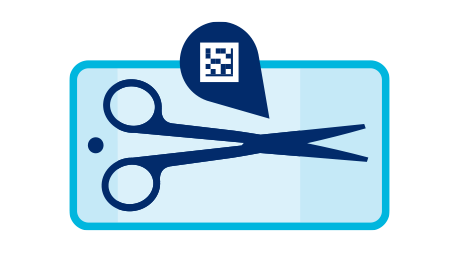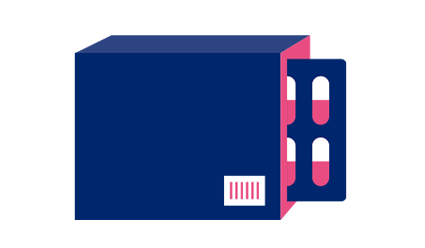GS1 Taiwan Barcode Verification Service
Today, 100% reliable GS1 Bar Codes are an absolutely vital part of the supply chain. As a result, users around the world increasingly require assurance that products they purchase that carry GS1 Bar Codes conform to GS1 standards simply because it helps to ensure better reading rates, accuracy and efficiency.
Providing a common approach to the delivery of a GS1 Barcode Verification Process increases consistency, confidence and helps to establish credibility and assurance that products are in conformance to GS1 General Specifications and thus will perform as intended.
GS1 Taiwan’s Barcode Verification, for both linear and 2D barcode, allows users to assess the accuracy of symbol structure and the readability of bar codes. Before users distribute their products, they will have chance to fix any failure of bar codes. Moreover, users will know their barcode is compatibility with international standards and interoperability and among different device brands.
Our service ensures barcode’s quality is compliance with ISO and GS1 standards. Via this service barcodes on finished products, devices and parts can be assuredly read constantly and successfully in the supply chain.
Except for symbol quality, we also check data accuracy, color, size and location. Some retailers, hospitals, logistics companies and public sectors only accept products from suppliers who have had the relevant barcodes verified by GS1 Tawan. Followings are the barcode types we verify:
- Linear barcode: EAN-8, EAN-13 and UPC-A (with or without add-ons), UPC-E, GS1 DataBar (all symbols), ITF-14,GS1-128, Code 39, Code 93, Code 128, Codabar, ITF, MSI Plessey, (all symbols no wider than 195mm).
- 2D barcode : GS1 DataMatrix, GS1 QR Code, Data Matrix, GS1 Databar, QR Code, , , Smallest x-dimension of 0.360mm. Direct Part Mark (DPM) with 30-, 45-, and 90-degree lighting angles to properly illuminate a wide variety of substrates.
Who Needs Barcode Verification?
From brand owners and manufacturers to packagers and retailers, people across industries use barcodes to track their products from production to the point of sale. A failure to scan properly can be slowing down production lines, supply chain efficiency and causing costly reprints, wasted product, and chargebacks. That’s the reason we need improve barcode quality to meet industry and application standards.
For Retailer Industry
Because of the substantial investment in their automated scanning infrastructure and the benefits for both parties satisfied from automation, retailers are expecting 100% barcode compliance from their suppliers, either be directly printed on corrugate boxes and product package or printed on labels.

For Medical Device Industry
In US, FDA UDI Guidance for industry is quoted:
"If a labeler chooses a bar code form of AIDC, the bar code form of the UDI should be tested for print quality. FDA recommends referring to the following standards and technical references for more information on determining the print quality: "

- ISO/IEC 15416: Information technology -- Automatic identification and data capture techniques -- Bar code print quality test specification -- Linear symbols;
- ISO/IEC 15415: Information technology -- Automatic identification and data capture techniques -- Bar code symbol print quality test specification – Two-dimensional symbols; and
- ISO/IEC 29158: Information technology -- Automatic identification and data capture techniques – Direct Part Mark (DPM) Quality Guideline.
In EU, Guidance note integration of the UDI within an organization’s quality management system illustrates some labelling considerations:
- Manufacturers should ensure that, as part of their quality management system, the label printing process is verified and validated, and the equipment is used and maintained in accordance with relevant procedures.
- Appendix II - Example of a UDI implementation plan
- Develop appropriate barcode implementation strategies, including barcode verification.
For US Drug Industry
Product Identifiers under the Drug Supply Chain Security Act Questions and Answers Guidance for Industry, need to be ensure their label quality. The CGMP requirements under 21 CFR parts 210 and 211 apply to the manufacture, processing, packing, or holding of a drug product, including packaging and labeling operations, testing, and quality control of drugs.

Barcode Types for Verification
- inear barcode: EAN-8, EAN-13 and UPC-A (with or without add-ons), UPC-E, GS1 DataBar (all symbols), ITF-14,GS1-128, Code 39, Code 93, Code 128, Codabar, ITF, MSI Plessey, (all symbols no wider than 195mm).
- 2D barcode : GS1 DataMatrix, GS1 QR Code, Data Matrix, GS1 Databar, QR Code
Service Charge
Linear BarCode: $1,000 NTD / per sample
2D BarCode: $2,000 NTD / per sample
Please send your sample to
GS1 Taiwan Barcode Verification Center
13F, #1.Section 4, Nan Jing East Road, Taipei, 10595, Taiwan
Download the Barcode verification report (Sample)
Verification Process
Step1. Contact GS1 Taiwan by Email, provide your information and sample details
Step2. GS1 Taiwan staffs review the case and fee
Step3. Send your sample to GS1 Taiwan
Step4. GS1 Taiwan staffs verify your sample
Step5. GS1 Taiwan send you the verification report and invoice by email
References:
- ISO/IEC 15415:2011
Information technology — Automatic identification and data capture techniques — Bar code symbol print quality test specification — Two-dimensional symbols - ISO/IEC 15416:2016
Automatic identification and data capture techniques — Bar code print quality test specification — Linear symbols - European Union: MDCG 2021-19 - Guidance note integration of the UDI within an organisation’s quality management system
- US FDA: Unique Device Identification: Policy Regarding Compliance Dates for Class I and Unclassified Devices, Direct Marking, and Global Unique Device Identification Database Requirements for Certain Devices.
